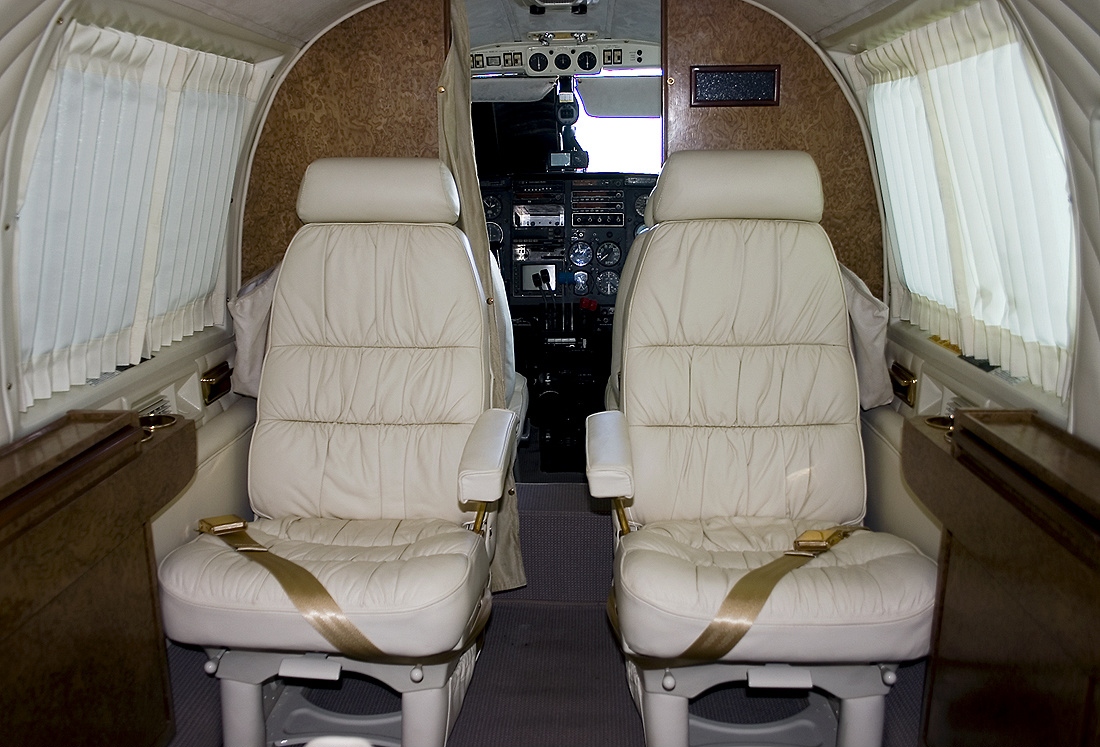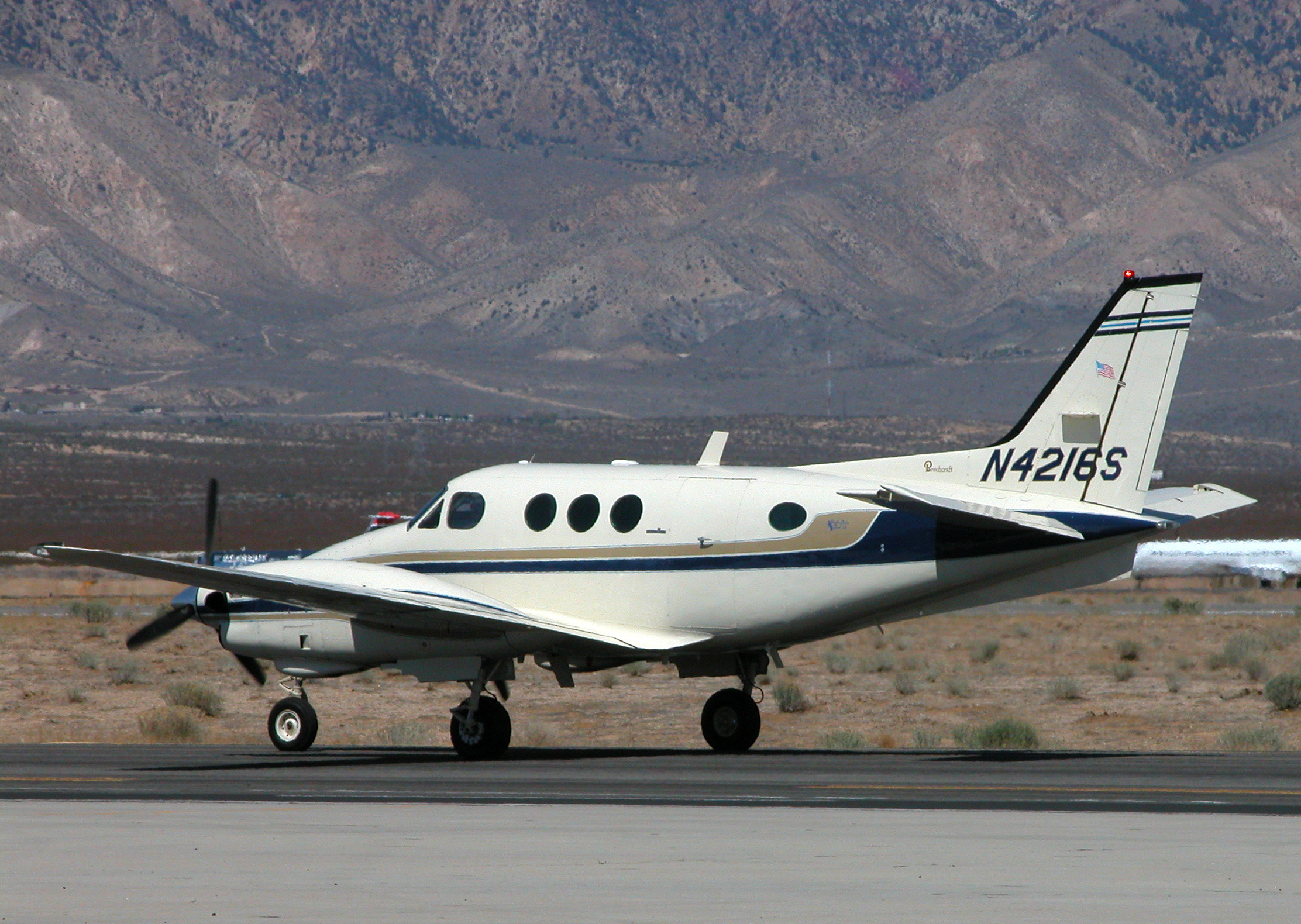|
Rico Linhas Aéreas
Rico Linhas Aéreas S/A was a Brazilian regional airline with its headquarters at Eduardo Gomes International Airport in Manaus, Brazil, authorized to operate scheduled passenger and cargo services in the Amazon region. The airline was grounded on 1 June 2010 and on 7 June 2011 lost its operational license. Current is a charter company. History Rico Linhas Aéreas was authorized to operate as a regional carrier in 1996, but its history is much older. In 1952, the Turkish immigrant Munur Yurtsever, known as Commander Mickey, who worked as an airplane mechanic in Nova Xavantina, Mato Grosso, bought an aircraft and started to fly in the region. The operations consisted of transportation of cargo to gold-mining locations of the region using small aircraft. During the 1960s, Mickey started a small charter and air taxi company called Taxi Aéreo Rondônia, specialized in flying to gold-mining centers of Rondônia and headquartered in Porto Velho. During the construction of the Tra ... [...More Info...] [...Related Items...] OR: [Wikipedia] [Google] [Baidu] |
Eduardo Gomes International Airport
Manaus International Airport – Eduardo Gomes is the airport serving Manaus, Brazil. It is named after Brazilian politician and military figure Air Marshal Eduardo Gomes (1896–1981). It is operated by Vinci Airports History Manaus International Airport replaced Ponta Pelada Airport as the main public airport of Manaus in 1976. Ponta Pelada was then renamed Manaus Air Force Base and began handling exclusively military operations. The construction of the airport began in 1972 and it was commissioned on March 31, 1976 by a domestic flight operated by a Boeing 727-100 of Serviços Aéreos Cruzeiro do Sul. At the time it was the most modern airport in Brazil and the first one to operate with jet bridges. Though originally planned to be named ''Supersonic Airport of Manaus'', its official name was changed to Eduardo Gomes by the law 5.967 of 11 December 1973. The airport has two passenger terminal buildings. Passenger Terminal 1 handles all domestic and international flight ... [...More Info...] [...Related Items...] OR: [Wikipedia] [Google] [Baidu] |
Borba, Amazonas
Borba is a Municipalities of Brazil, municipality in the state of Amazonas (Brazilian state), Amazonas in northern Brazil. Location Borba is located on the banks of the Madeira River around south of Manaus. Its population was 41,748 (2020) and its area is 44,251 km². The city is the seat of the Territorial Prelature of Borba. The municipality contains 46% of the Rio Madeira Sustainable Development Reserve, created in 2006. It contains about 10% of the Matupiri State Park, created in 2009 along the Matupiri River. It fully contains the Matupiri Sustainable Development Reserve, created in 2009. It contain 21% of the Igapó-Açu Sustainable Development Reserve, also created in 2009. Borba also contains about 60% of the Acari National Park created by president Dilma Rousseff in 2016 in the last week before her provisional removal from office. History Founded in 1728 as the Jesuit mission Aldea Trocano by Portuguese Padre João Sampaio. In 1755, it became the first ''vila ... [...More Info...] [...Related Items...] OR: [Wikipedia] [Google] [Baidu] |
Piper PA-31 Navajo
The Piper PA-31 Navajo is a family of cabin-class, twin-engined aircraft designed and built by Piper Aircraft for the general aviation market, most using Lycoming engines. It was also license-built in a number of Latin American countries. Targeted at small-scale cargo and feeder liner operations and the corporate market, the aircraft was a success. It continues to prove a popular choice, but due to greatly decreased demand across the general aviation sector in the 1980s, production of the PA-31 ceased in 1984. Design and development At the request of company founder William T. Piper, Piper began development of a six- to eight-seat twin-engined corporate and commuter transport aircraft in 1962 under the project name ''Inca''. The type, now designated the PA-31 and looking like a scaled-up Twin Comanche, was officially announced in late 1964 after its first flight on 30 September that year. It was a low-wing monoplane with a conventional tail, powered by two Lycoming ... [...More Info...] [...Related Items...] OR: [Wikipedia] [Google] [Baidu] |
Beechcraft King Air
The Beechcraft King Air is a line of American utility aircraft produced by Beechcraft. The King Air line comprises a number of twin-turboprop models that have been divided into two families. The Model 90 and 100 series developed in the 1960s are known as King Airs, while the later T-tail Model 200 and 300 series were originally marketed as Super King Airs, with the name "Super" being dropped by Beechcraft in 1996 (although it is still often used to differentiate the 200 and 300 series King Airs from their smaller stablemates). The King Air was the first aircraft in its class and was produced continuously from 1964 to 2021. It outsold all of its turboprop competitors combined. It has recently faced competition from jet aircraft such as the Embraer Phenom 100, Honda HA-420 HondaJet and Cessna Citation Mustang; as well as from newer turboprop aircraft including the Piaggio P180 Avanti, and single-engine Piper Malibu Meridian, Pilatus PC-12, and Socata TBM. Development Mod ... [...More Info...] [...Related Items...] OR: [Wikipedia] [Google] [Baidu] |
Cessna Citation
The Cessna Citation is a family of business jets by Cessna that started in 1972 with the entry into service of the first model. In the fifty years following the 1969 first flight, more than 7,500 Citations were delivered, forming the largest business jet fleet. Deliveries reached 8,000 by 2022, while logging over 41 million flight hours. The line started with the small Cessna Citation I, Citation I prototype flying on September 15, 1969, and produced until 1985, developed into the 1978-2006 Cessna Citation II, Citation II/Bravo, the 1989-2011 Cessna Citation V, Citation V/Ultra/Encore and the Cessna CitationJet, CitationJet since 1993. The standup Cessna Citation III, Citation III/VI/VII was delivered from 1983 to 2000; its fuselage was reused in the Cessna Citation X, Citation X/X+ delivered from 1996 to 2018, the Citation Sovereign, Sovereign from 2004 to 2021 and the Citation Excel, Excel since 1998. The Citation Mustang, Mustang was a Very Light Jet delivered from 2006 to 2 ... [...More Info...] [...Related Items...] OR: [Wikipedia] [Google] [Baidu] |
Embraer EMB 120 Brasilia
The Embraer EMB 120 Brasilia is a twin-turboprop 30-passenger commuter airliner designed and manufactured by the Brazilian aircraft manufacturer Embraer. The EMB 120 began development during 1974. While initially conceived as a modular series of aircraft, the ''Family 12X'' and referred to as the ''Araguaia'', intending to achieve a high level of commonality with the EMB 121 Xingu, the aircraft was redesigned and relaunched with the ''Brasilia'' name scheme during 1979. The redesign, which drew on operator feedback, reduced the seating capacity somewhat while removing commonality with the EMB 121. Its size, speed, and ceiling enabled faster and more direct services to be flown in comparison to similar aircraft. The EMB 120 features a circular cross-section fuselage, low-mounted straight wings and has a T-tail. On 27 July 1983, the prototype performed its maiden flight. During October 1985, the first EMB 120 entered service with Atlantic Southeast Airlines; it quickly entered ... [...More Info...] [...Related Items...] OR: [Wikipedia] [Google] [Baidu] |
Embraer EMB 110 Bandeirante
The Embraer EMB 110 Bandeirante (English: ''pioneer'') is a Brazilian general purpose 15–21 passenger twin-turboprop light transport aircraft designed by Embraer for military and civil use. The EMB 110 was designed by the French engineer Max Holste; it had been designed in line with specifications issued by the Brazilian Ministry of Aeronautics in 1965.''Air International'' April 1978, pp. 163–164. The goal was to create a general purpose aircraft, suitable for both civilian and military roles with a low operational cost and high reliability. On 26 October 1968, the ''YV-95'' prototype performed its maiden flight; an additional two ''EMB 110'' development aircraft would follow along with an initial order for 80 transport aircraft for the Brazilian Air Force in the following year. Type certification was received from the Brazilian aviation authorities in late 1972, permitting its entry to service in April 1973 with the Brazilian airline company Transbrasil. Various customers i ... [...More Info...] [...Related Items...] OR: [Wikipedia] [Google] [Baidu] |
Vila Bittencourt
Vila Bittencourt is a populated place in Amazonas, Brazil on the eastern bank of the Japurá River (or Caquetá River) which forms the Brazil–Colombia border at this point. There is a Brazilian Armed Forces The Brazilian Armed Forces ( pt, Forças Armadas Brasileiras, ) are the unified military forces of the Federative Republic of Brazil. Consisting of three service branches, it comprises the Brazilian Army (including the Brazilian Army Aviatio ... base there. References Brazil–Colombia border {{AmazonasBR-geo-stub ... [...More Info...] [...Related Items...] OR: [Wikipedia] [Google] [Baidu] |
Maués Airport
Maués Airport is the airport serving Maués, Brazil. Airlines and destinations Access The airport is located from downtown Maués. See also *List of airports in Brazil This is a list of airports in Brazil, sorted by location. The National Civil Aviation Agency of Brazil lists on March 10, 2022, 491 public and 2,677 private aerodromes in Brazil. __TOC__ Airports Airport names shown in bold indicate that th ... References External links * * * {{DEFAULTSORT:Maues Airport Airports in Amazonas (Brazilian state) ... [...More Info...] [...Related Items...] OR: [Wikipedia] [Google] [Baidu] |
Maués
Maués is a municipality located in the Brazilian state of Amazonas. Its population was 65,040 (2020) and its area is 39,988 km². Geography and location Maués is known as the "Land of Guaraná". There are sandy beaches, and Maues summer festival and Guarana festival. The Mundurucus and Maues Indians cultivated the guarana fruit, which is the basis for the famous Brazilian soft drink. Maués means "talking parrots" and it is originated from one of the Indian clans in the region. Maués has 22.000 inhabitants with another 20.000 natives spread along 140 river villages. The area's 20.000 people are distributed within 140 villages spread along the rivers. Maués is located on the side of Maués-Açu river and can be reached from Manaus (267 km away) by regional boat (18 hours), fast boat (7 hours) or plane (45 min.). Maués is used as a starting point for adventure trekking including visit to the Amana waterfall, old goldmines, caves, exploration of primary jungle with Indi ... [...More Info...] [...Related Items...] OR: [Wikipedia] [Google] [Baidu] |
Manicoré Airport
Manicoré Airport is the airport serving Manicoré, Brazil. Airlines and destinations Access The airport is located from downtown Manicoré. See also *List of airports in Brazil This is a list of airports in Brazil, sorted by location. The National Civil Aviation Agency of Brazil lists on March 10, 2022, 491 public and 2,677 private aerodromes in Brazil. __TOC__ Airports Airport names shown in bold indicate that th ... References External links * * * {{DEFAULTSORT:Manicore Airport Airports in Amazonas (Brazilian state) ... [...More Info...] [...Related Items...] OR: [Wikipedia] [Google] [Baidu] |
Manicoré
Manicoré is a municipality located in the south-east of the Brazilian state of Amazonas. Location The population of Manicoré was 56,583 (2020) and its area is 48,282 km2. The town is located on the banks of the Madeira River about downstream from where the Manicoré River merges into the Madeira. The city is served by Manicoré Airport. Economy Santo Antônio do Matupí is a major centre of logging in the region. History Manicoré's origins date back to 1637, with the expedition of Pedro Teixeira, a Portuguese explorer and military man. The authorities of Grão-Pará sent an escort to the Madeira River in 1716, commanded by João de Barros e Guerra, an experienced captain. In 1797, the village of Crato was founded, under orders from the Governor of Grão-Pará, with a view to facilitating commercial transactions between Pará, Mato Grosso and Goiás. The village was transferred to a site between the Baetas and Arraias rivers, in 1802. On July 4, 1858, through Law no. ... [...More Info...] [...Related Items...] OR: [Wikipedia] [Google] [Baidu] |



.jpg)

.jpg)